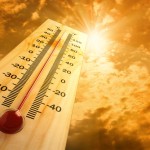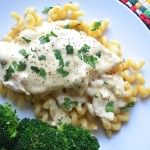Hot, Humid Weather Can Lead to Hyperthermia
 Lately, this heat has me scrambling to keep myself presentable. I find myself strategically standing in direct line of fire of an A/C unit. For most of us, this hot weather is just an irritation along with the droopy, damp or frizzy hair. But all kidding aside, this heat can cause some serious health problems when our bodies are unable to cool off enough. When our internal core temperature reaches 104 F or higher this is called hyperthermia (heat – related illness) and those most at risk of getting this are infants, children, elderly, and those who exercise or work outdoors.
Lately, this heat has me scrambling to keep myself presentable. I find myself strategically standing in direct line of fire of an A/C unit. For most of us, this hot weather is just an irritation along with the droopy, damp or frizzy hair. But all kidding aside, this heat can cause some serious health problems when our bodies are unable to cool off enough. When our internal core temperature reaches 104 F or higher this is called hyperthermia (heat – related illness) and those most at risk of getting this are infants, children, elderly, and those who exercise or work outdoors.
Heat Stroke – Also known as Sun Stroke, is the most severe and can be fatal if not treated promptly. A person could have heat stroke if their temperature is 104 F or higher without sweating. They may feel nauseous and have trouble breathing. They may become confused, agitated or exhibit odd behavior. In severe cases they may have a seizure or go into a coma. If you suspect heat stroke, call 911 immediately. Cool the person off as best you can until help arrives. (Think shade, fanning, cool water on the body and to drink if they are able, loosening/removing clothing, and ice packs).
Heat Exhaustion – This can be a precursor to heat stroke. It can occur when someone is exerting himself or herself in a hot environment (indoors or out). This is when the body is unable to regulate the ratio of sweating (and thus cooling) to the body’s core temperature. Signs and symptoms include profuse sweating, nausea and possibly vomiting. They may also get a heat rash and cramps. Treatment is to immediately stop any activity and cool down. If the person is able to keep down fluids they should drink water and some form of electrolytes like Gatorade or coconut water. More serious instances may need IV fluids. If untreated it could develop into Heat Stroke.
Heat Cramps – This is often one of the first signs and least serious of a heat related illness. This occurs mostly in those exerting themselves outdoors in the heat and presents as spasms of the major muscles being used. The person may also have profuse sweating. Treatment is to stop any activity, cool down and stretch the affected muscles. Again, untreated, this can lead to Heat Exhaustion and then Heat Stroke.
Prevention is key here. We cannot control the temperature but we can modify our activities accordingly. If you exercise outside, consider going in the early morning or later evening. Watch your children, especially since they are unable to regulate their body temperature well through sweating. The elderly also need to be closely monitored. Hydration is vital. Drink copious amounts of water so the body has something to sweat out but also remember to replenish those electrolytes if you are sweating a lot with some form of sports drink or coconut water. Avoid caffeine and alcohol, as this will only further dehydrate you. If you must be outdoors, dress appropriately in loose, light, “breathable” clothing; avoid being in direct sun; take breaks as needed and you may need to work or exercise at a slower pace for the time. For tips on staying cool in the heat click here.



















